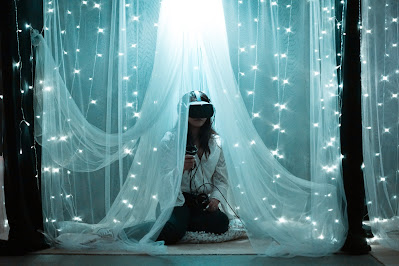In the ever-evolving landscape of artificial intelligence (AI), a concept looms on the horizon that both excites and challenges our understanding of technology: the AI singularity. Imagine a future where machines not only match but surpass human intelligence.
This article will unravel the complexities of the AI singularity, exploring its concept, implications, and real-world examples that hint at a future where the line between human and machine blurs.
Understanding the AI Singularity
The AI singularity is not just a buzzword; it's a profound idea with far-reaching consequences. Let's start by dissecting its essence and what it means for the world of AI.
The Evolution of Artificial Intelligence
To grasp the concept fully, we must trace the evolution of AI from its inception to its current state. Understanding how AI has progressed over the years is crucial for contextualizing the singularity.
Breaking Down the Singularity
What exactly happens during the AI singularity? We'll delve into the key components and dynamics of this transformative moment.
Implications of the AI Singularity
As AI evolves towards the singularity, it brings with it a host of implications that touch on various aspects of our lives. Let's explore the potential consequences.
AI Singularity in Popular Culture
The concept of the AI singularity has captured the imagination of writers and filmmakers. We'll take a journey through popular culture's interpretations of this phenomenon.
Real-World Examples and Indicators
Although the singularity remains a future possibility, there are real-world examples and indicators that suggest we are moving closer to this momentous event.
1. Superhuman AI
AI systems have already demonstrated superhuman abilities in specific domains, from chess-playing computers to language models that generate human-like text.
2. Autonomous Machines
The development of autonomous machines, such as self-driving cars, showcases AI's ability to outperform humans in complex tasks.
3. Advanced Neural Networks
Neural networks, inspired by the human brain, have made significant strides in processing vast amounts of data and achieving feats beyond human capacity.
Ethical Considerations and Challenges
With great power comes great responsibility. We'll examine the ethical considerations and challenges that arise as AI approaches the singularity.
1. Job Displacement
The rise of AI may lead to job displacement on an unprecedented scale. We'll explore the potential consequences for the workforce.
2. Bias and Discrimination
As AI systems become more intelligent, the risk of perpetuating bias and discrimination also increases. We'll discuss the importance of addressing these issues.
3. Control and Regulation
How do we ensure responsible development and deployment of AI as it approaches the singularity? We'll delve into the role of regulation and oversight.
Final Thoughts
In conclusion, the concept of the AI singularity presents a future both exciting and challenging. As we inch closer to a world where machines rival human intelligence, it is imperative that we address the ethical, societal, and regulatory aspects of this transformation.
By understanding the evolution, implications, and real-world examples of the AI singularity, we can better navigate the path ahead.
The AI singularity is not a distant science fiction dream; it is a reality we are approaching.
The question remains - How will we harness the power of AI for the benefit of humanity while mitigating its risks? Only time will tell, but with knowledge and foresight, we can shape a future where the singularity is a force for good.
Edited By - Tanya Khurana
This article has been authored exclusively by the writer and is being presented on Eat My News, which serves as a platform for the community to voice their perspectives. As an entity, Eat My News cannot be held liable for the content or its accuracy. The views expressed in this article solely pertain to the author or writer.









0 Comments